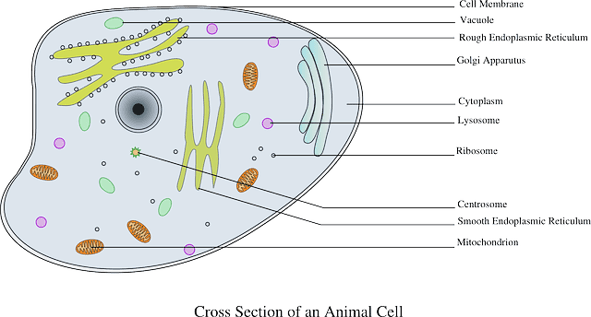
Cells are the smallest units of life and organisms consist of 1 or more cells. For ease of exchanging materials across the membrane.

Cell sizes vary for different cell types in the same species.
Why are most cells small. I think cells are small because membranes are weak. If the cell gets too big the cell will fall apart. One reason therefore why cells are so small and there are so many of them is simple logistics.
But there is another reason and the one given in this story. The tyranny of mathematics. Two mathematical quantities rule the lives of every cell.
Their surface area and their volume. Brooklyn College explains that cells are small because they must have a large surface area relative to the amount of volume they contain to function properly. As a sphere grows larger its volume increases much more rapidly than its surface area does.
This presents logistical problems for the cell as it tries to transport resources and products. Cells are small because the ratio of surface area to volume is the most efficient at their size. This is because when you have a lot of small objects vs a few big objects the surface area is much larger in relation to volume.
Another reason is when the cells are small and plentiful they are easier to replicate and replace when damaged. The larger the cell the smaller the SAV ratio The smaller the ratio the less efficient the cell The cell membrane is too small to take in enough nutrients for the large volume. The larger the cell the more materials it has to move.
For this reason most cells stay relatively small. Cells are generally small in size because of two main reasons. Different regions of a cell can communicate with each other rapidly for the cell to function effectively.
Cells have a large surface areavolume ratio for greater diffusion of substances in and of the cell. While the mitochondrial amount increases with cell size as was expected there is a decline in mitochondrial activity with increasing cell size. What reason is there for cells tending to remain small.
For ease of exchanging materials across the membrane. Reduces the distance materials must travel to reach every part of the cell. Why is a cell small.
A cell is small because small is a lot. Cells are not always the same size. Cell sizes vary for different cell types in the same species.
A chicken egg that we eat is a cell. Which of the following statements accurately explains why most cells are small. Many small cells can transport more materials into and out of the cell than a single large cell can.
Small cells can reproduce more slowly than larger cells can. Small cells reproduce more quickly than larger cells. One large cell is able to transport more materials into and out of the cell than many small cells are.
Thus if the cell grows beyond a certain limit not enough material will be able to cross the membrane fast enough to accommodate the increased cellular volume. When this happens the cell must divide into smaller cells with favorable surface areavolume ratios or. 2 Why are most cells small Explain using the results of the experiment Most from BIOLOGY AP Biology at John A.
Small business loans are easier to get if a. The owner has a lot of his own money invested Realize income is a the amount of income on hand b. Income already spent c.
Income that In isotope sodium-25 what are the atomic number number of protons electrons and neutrons. Why are cells so small. Take 3 blocks of agar of different size 1cm 2cm 3cm these are our cell models.
Measure the length width and height of each cube using a ruler. Calculate the area of each face of the cubes and add all the areas together for a single cube. In this video I use diffusion cubes to show why cells are so small.
A small cell with a large surface area to volume ratio can efficiently move materials in. Most cells are small to maximize the surface area to volume ratio making diffusion more efficient. Convolutions in the cell membrane can also increase the surface area without increasing the volume therefore increasing the surface area to volume ratio even further.
A small cell can replicate faster than a larger cell because it takes less time to divide a smaller cell than a bigger cell. Therefore the right answer is a d and e. Advertisement Advertisement New questions in Biology.
How the intestinal cells help the intestines work within the digestive system. The smallest objects that can be seen by the human eye are about 01 mm long. Some single-celled organisms are just big enough that you could see them.
A human egg is about 012 mm in diameter. The vast majority of cells in your body and cells that form bacteria are too small to see without a microscope. But is there more then 1 type of Cell.
And Why are they so smallYes we are ba. Cells are the smallest units of life and organisms consist of 1 or more cells. But if cells stay under that 10-micron thresholdas the vast majority of animal cells dothey can essentially escape gravitys forces.
The building blocks of life are small essentially. At 0150 µm in diameter most prokaryotic cells are significantly smaller than eukaryotic cells which have diameters ranging from 10100 µm Figure 3. The small size of prokaryotes allows ions and organic molecules that enter them to quickly spread to other parts of the cell.
Small cells provide better cell-edge performance particularly for the uplink than large cells. The fact that small cells provide almost double the capacity of a macro cell is why they are set to become an important part in addressing the capacity crunch in wireless networks.